


Successful graduates of UMPRUM (abroad): graphic designer Adam Macháček
Adam Macháček is a graphic designer that has been working internationally for many years. During his studies at UMPRUM in Prague, he completed internships at the Gerrit Rietveld Academie in Amsterdam and in Switzerland at the prestigious École cantonale d'art de Lausanne (ÉCAL). Find out how he looks back on these experiences today in the following interview.
Why did you choose UMPRUM and the Graphic Design and Visual Communication Studio led by Zdeněk Ziegler and Rostislav Vaněk for your studies?
I studied promotional graphics at the Secondary School of Applied Arts in Prague and it was a natural choice to continue at UMPRUM, where Zdeněk Ziegler's Graphic Design and Visual Communication Studio and Jan Solpera's Type Design Studio were located. We would go there regularly to see students' final semester projects and it was clear from the beginning that Ziegler's studio was where I wanted to go. I still remember the schoolwork of Zuzana Lednická, Radim Pešek, Michal Rydval, and others. At that time, assistant Tomáš Machek designed several publications and exhibitions with Zdeněk Ziegler, which I was excited about, and I admired Ziegler's book editions. There was also an international outreach in his studio - visiting professors from abroad came here regularly, foreigners studied there, and there was cooperation and exchange with foreign galleries and schools. All of this was a revelation to me in 1998, when there was hardly anything on the Internet. Today, of course, many things are completely different and there are many more opportunities to study, both in the Czech Republic and in Europe. I'd be quite interested to know on what basis students choose schools now.
What was your reason for your long-term stay abroad during your studies?
I really enjoyed it at UMPRUM, but the system at the time was set up in such a way that you could graduate in 6 years, just like in medicine - there was no bachelor's degree. Six years was an incredibly long time for what we were doing and how many of us there were in the studio - not even 20 students in six years! In retrospect, today I understand why many students were doing jobs or even going to work alongside school. I went to Pavel Štech's photography studio for an internship after two years, in my third year I went to a school in Amsterdam, in my fourth year I went to The Hague for an internship and in my fifth year, I went to a school in Lausanne. There was opportunity to organize it in this way, and both professors Ziegler and Vaněk supported us in this, for which I will always be grateful. I was also fortunate to experience both of them.
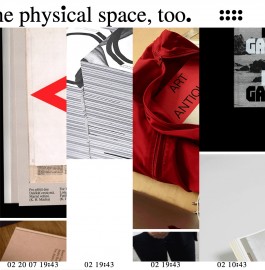
01 Výstava 20YY Designers, California College of the Arts, 2020

02 Výroba obálek publikace Katharina Grosse, Wunderbild, 2018
Foto Natalija Martinovic for Studio Katharina Grosse
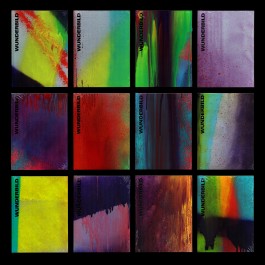
03 Katharina Grosse, Wunderbild, publikace, 2018
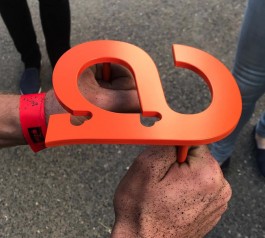
04 Vizuální identita AVU, 2018–2020
In Amsterdam, you studied at the Gerrit Rietveld Akademie and in Switzerland at the prestigious ÉCAL University. Did you find any differences in educational leadership in comparison to the student body?
It was a shock. UMPRUM operated according to the classical academic model, i.e. studios were commonly named after the heads of the studio (we still call them that) and only a handful of applicants got were accepted (e.g. two or three out of a hundred on average). So just the fact that you got there could rightly make you feel that you were in the elite of the field. Yes, there were a lot of great people there, often some of the best, but compared to foreign schools we were only a few, there was a lack of comparison, competition, and a much broader opinion base. It was a wonderful and very valuable experience with people I really respect, but as I mentioned, from my perspective, it was impossible to practice for 6 years.
GRA and ÉCAL each worked a little differently, but both are undergraduate degrees, and ÉCAL added Masters later. There are much more people studying in each field, and you get to meet a much wider range of teachers, opinions, and try out a range of approaches. The things that were done there were much looser compared to UMPRUM - projects didn't look as professional at first glance as we were used to doing in Prague, they were often 'impractical'. There was more discussion about everything, it was schoolwork with often incomprehensible assignments and it took me a while to realize that it was possible to learn in a completely different way. I'm not saying one is better than the other, something different suits everyone.
How did your studies in Amsterdam and Switzerland enrich you and what practical experiences did you take away from it?
I was profoundly influenced and enriched by that experience - I had the opportunity to meet many teachers and classmates who still inspire me today, and some of whom I am still in touch with. The practical experience has been more of a life experience - finding myself in a completely unfamiliar environment, outside my social circle, communicating in other languages, starting from scratch. This is probably still true today, despite the fact that you can study almost anything online.
Could you now describe the view of foreign graphic designers on the current generation of artists from the Czech Republic?
That's a difficult question - everything is so interconnected that you don't really think about where the other person is from. From my point of view, we have quite a strong typographic generation - I often find out later that the typeface we are testing in a project was made by someone from the Czech Republic. This is of course subjective and I don't find it important. A much more interesting answer to this question and the topics we are discussing here has been given for more than 60 years by the International Biennial of Graphic Design in Brno, one of the oldest industry events in the world. Unfortunately, the Moravian Gallery has stopped hosting it. We are trying to preserve it at brnobienale.org - anyone can join.
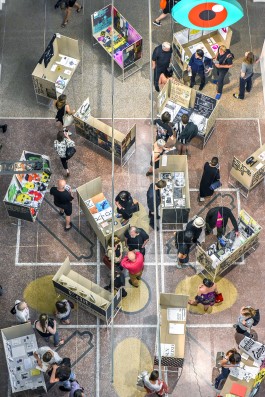
05 27. Mezinárodní Bienále Brno, 2016
Foto Moravská galerie v Brně
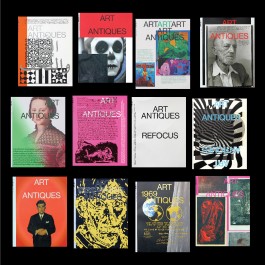
06 Art Antiques, redesign časopisu, 2018–2022

07 Arthur Jafa, identita výstavy, Rudolfinum, 2019
As a graphic designer, do you perceive any regional boundaries, either in terms of thinking about graphic design or purely practical in the execution of commissions? How do you work together in an international team or, for example, in an international jury of competitions?
I don't see any regional boundaries in the thinking of graphic designers, there are huge regional differences in the perception and use of graphic design itself. You could compare it to architecture, urbanism, and how people relate to each other within public space - it's related to the culture of each place. I'm used to working with people from different places, and the schools I mentioned prepared me for that, which are very international.
Where are you currently based and do you have any international collaborations or new publications planned?
I've been living in Berkeley, California, for a long time, but I do a lot of things in Europe, where I have my closest colleagues - so I don't know what to call international collaboration anymore. Here in the Bay Area, I tend to be part of multiple larger teams that work mostly with tech companies; in Europe, my work is much more individual. It's also related to education - it's so expensive to study in the US that lots of students have to go into debt for years. Graduates are looking for jobs instead of trying to start on their own. There are very few small graphic design studios like those in Europe. Every system has its pros and cons, there are top universities, but I think we should value the European ones and not take them for granted.
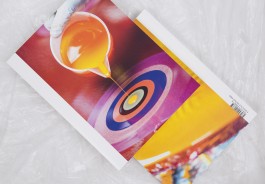
08 Milan Houser, publikace, 2020
Foto Tereza Havlínková
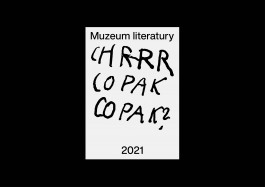
09 Vizuální identita Muzeum literatury, 2020–2022
In addition to his studies at the Prague UMPRUM in the Studio of Graphic Design and Visual Communication under Zdeněk Ziegler and Rostislav Vaněk, Adam Macháček also studied at the Gerrit Rietveld Academie in Amsterdam and at the prestigious ÉCAL University in Switzerland. He completed an internship at Studio Dumbar in The Hague. Since 2004 he has worked in his own studio Welcometo.as. In 2011 he co-founded the graphic design studio 20YY Designers, whose portfolio includes artists' exhibition catalogues, visual identities of institutions and the monthly magazine Art+Antiques. Among other things, he has curated graphic design exhibitions and authored several exhibition projects.
Interview conducted by Tereza Škvárová
Rozhovory s úspěšnými absolventkami a absolventy UMPRUM vznikly v rámci projektu Rozehrané priority českého předsednictví, podpořeného Centralizovanými rozvojovými projekty MŠMT ČR.